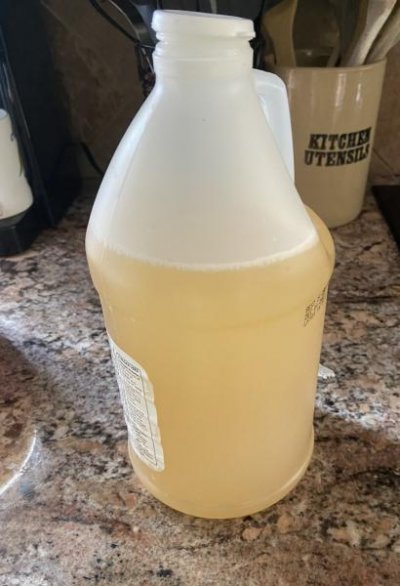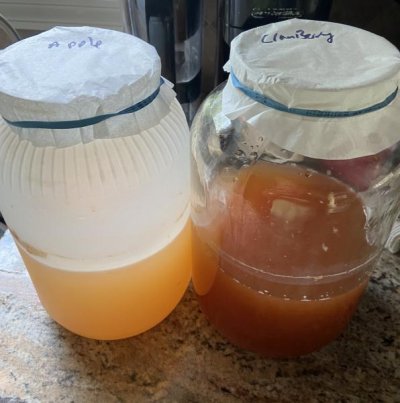So my vinegar made from apple scarps, sugar and water seems to be coming along fine. Ive already let the scraps sit for 2 weeks, strained it and let it sit another 2 weeks. During this time a mother formed. Now its in its 3rd week after straining and it seems the mother stank to the bottom and another one is forming at the surface. I tasted it earlier in the week and I was happy with the results. So my questions are:
1) is its normal for a second mother to form ?
2) Is this a good time for me to take out the vinegar I want to use/ store , and add wine to the remaining to start another process going ?
***I have some crappy apple wine that I made , and I think this would be a good way to use some of it up. In addition, I also made some cranberry wine, so why not make some cranberry vinegar, especially this time of year***
I sounds to me like your vinegar ferments are approaching the Kombucha method. If you have a working culture going, there is no need to ad more fruit scraps etc. All that will do is prolong an alcohol fermentation which you don't want. The "bubbling" you see is the alcohol being produced. Vinegar fermentation will not produce "bubbles". What you want to do is feed your batch "alcohol" and not fruit scraps.
I'm assisting another person with this. I will attach a simple calculation for you to follow that I offered her. When you feel you have a batch that resembles vinegar, remove the mother and discard it. The mother serves no purpose other than to protect the culture in ways that can be explained later. Your method should be "static" and it should not be disturbed in any way once you feed it. Because it is a static process, the mother interferes with the O2 absorption at the surface. The "Aceto Bacter" (vinegar making bacteria) is a strict aerobe. It requires free O2 to survive. Without it, it dies.
Back to your batch; Remove the mother and discard. There will be enough culture in the liquid to keep it going. Measure the volume you remove "As Finished Vinegar" and seal it tightly in a bottle so as to prevent air from getting in. Be sure to leave a slight head space. If you know the volume you removed, it must be replaced with alcohol that should not be too strong. You want to keep it at approximately 6%-7% alcohol/vol. You can use whiskey, Rum Wine or a strong beer. If you know the alcohol values, the calculation I'm attaching will help you "dilute" these. Wine would be the best choice because the whiskey and Rum are usually 40% alcohol/vol. and your dilution will not see a very large volume. Wine is your best option but be sure to know the alcohol value. To water down the wine, you can use a fruit juice of your choice, preferably grape juice, in keeping with the wine scenario.
Here is the calculation and please contact me if you have any difficulties with it. All you need to do is insert your values.
Diluting an Alcohol Base with a Liquid Containing No Alcohol
To Obtain an Exact Desired Volume
Desired: 8.0% alcohol/volume
Base(Wine): 11.2%/volume
Desired volume: 750ml
Dilution Liquid is water
750ml / [Base 0.112 / 0.08] = 535.7ml water
750ml – 535.7ml = 214.3ml base (wine)
Base Liquid = 535.7ml
Dilution Water = 214.3ml
Therefore, add 214.3ml of dilution liquid (water) to 535.7ml base (Wine).
Total volume 535.7ml + 214.29ml = 750ml
Check:
(535.7ml Base)(0.112) = 60ml of alcohol
60ml alcohol / 750ml TV = 8% alcohol/volume.


